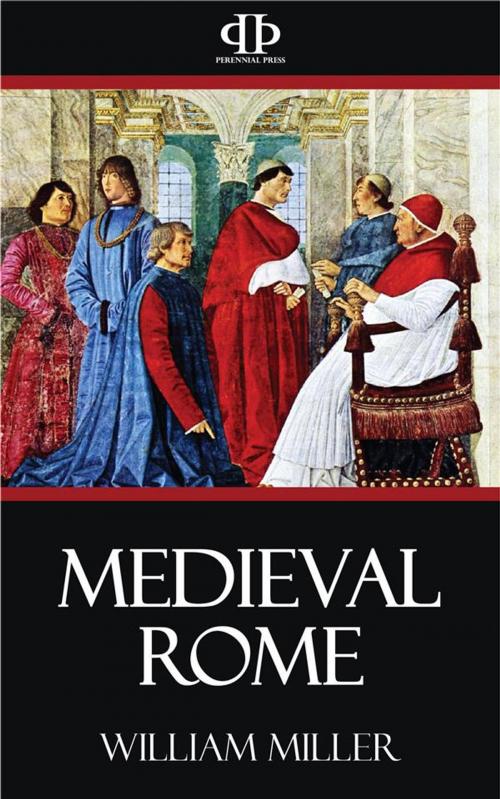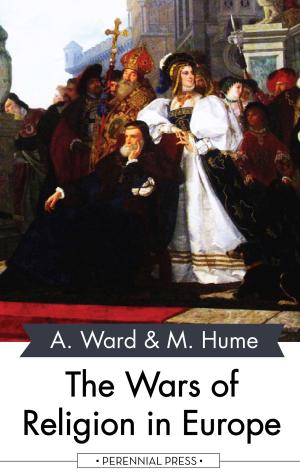| Author: | William Miller | ISBN: | 9781518336768 |
| Publisher: | Perennial Press | Publication: | December 14, 2015 |
| Imprint: | Language: | English |
| Author: | William Miller |
| ISBN: | 9781518336768 |
| Publisher: | Perennial Press |
| Publication: | December 14, 2015 |
| Imprint: | |
| Language: | English |
No one who visits both Rome and Athens at the present day can fail to be struck by one remarkable difference between the two famous cities, which stand for so much in the history of the world. While Athens is composed of a very old group of ruins and a brand-new town, which was rapidly made to order in Germany; while every trace of that mediæval splendour, which once distinguished the court of the Frank dukes, has vanished; in Rome, on the other hand, we have side by side the works of the kings, the memorials of the Republic, the monuments of the Empire, the remains of the Middle Ages, and the modern erections that have sprung up since 1870. Thus, while at Athens there is a sudden transition from buildings, which were constructed in the golden age of Periklês, to houses planned in the reigns of Otho and George, Rome furnishes us with an almost unbroken series of historical monuments from the time of Romulus down to that of Vittorio Emanuele III. The rise of the Papacy saved the Imperial city from falling in the Middle Ages to the condition of a decayed town, and, after it had ceased to be the capital of a vast Empire, it was still the centre of the religious world.
No period in the history of the Papacy, and, therefore, of that mediæval Rome, which it represents, is more important than the eleventh century, that same century which witnessed the transformation of our own history by the Norman conquest of England. Under Benedict IX., the Roman Church reached a level of degradation, almost as low as that to which it descended under the Borgias. The Vicar of Christ sold his high office to Gregory VI., in return for an assignment to his private uses of the Peter's Pence that were paid by the English. The loss of the temporal power had accompanied this abandonment of spiritual aims. The pilgrim to the Holy City was lucky if he escaped the bands of robbers which infested the approaches to it. Within the walls, the churches were allowed to fall into ruin, and the priests to run riot in every kind of debauchery. Murder and outrage were of nightly occurrence in the streets, and the Roman nobles did not spare even the altar of St. Peter in their quest for plunder. They were, indeed, the arbiters of the Papacy, and made Popes at their will, just as in former days the prætorians had proclaimed emperors according as it suited their purpose. In short, about the middle of the eleventh century, Rome and its Church were in the lowest depths of humiliation, when suddenly there arose a man who raised the Papacy to a pinnacle which it had never occupied before, and made the name of Rome once more feared and respected by the great ones of the earth...
No one who visits both Rome and Athens at the present day can fail to be struck by one remarkable difference between the two famous cities, which stand for so much in the history of the world. While Athens is composed of a very old group of ruins and a brand-new town, which was rapidly made to order in Germany; while every trace of that mediæval splendour, which once distinguished the court of the Frank dukes, has vanished; in Rome, on the other hand, we have side by side the works of the kings, the memorials of the Republic, the monuments of the Empire, the remains of the Middle Ages, and the modern erections that have sprung up since 1870. Thus, while at Athens there is a sudden transition from buildings, which were constructed in the golden age of Periklês, to houses planned in the reigns of Otho and George, Rome furnishes us with an almost unbroken series of historical monuments from the time of Romulus down to that of Vittorio Emanuele III. The rise of the Papacy saved the Imperial city from falling in the Middle Ages to the condition of a decayed town, and, after it had ceased to be the capital of a vast Empire, it was still the centre of the religious world.
No period in the history of the Papacy, and, therefore, of that mediæval Rome, which it represents, is more important than the eleventh century, that same century which witnessed the transformation of our own history by the Norman conquest of England. Under Benedict IX., the Roman Church reached a level of degradation, almost as low as that to which it descended under the Borgias. The Vicar of Christ sold his high office to Gregory VI., in return for an assignment to his private uses of the Peter's Pence that were paid by the English. The loss of the temporal power had accompanied this abandonment of spiritual aims. The pilgrim to the Holy City was lucky if he escaped the bands of robbers which infested the approaches to it. Within the walls, the churches were allowed to fall into ruin, and the priests to run riot in every kind of debauchery. Murder and outrage were of nightly occurrence in the streets, and the Roman nobles did not spare even the altar of St. Peter in their quest for plunder. They were, indeed, the arbiters of the Papacy, and made Popes at their will, just as in former days the prætorians had proclaimed emperors according as it suited their purpose. In short, about the middle of the eleventh century, Rome and its Church were in the lowest depths of humiliation, when suddenly there arose a man who raised the Papacy to a pinnacle which it had never occupied before, and made the name of Rome once more feared and respected by the great ones of the earth...















